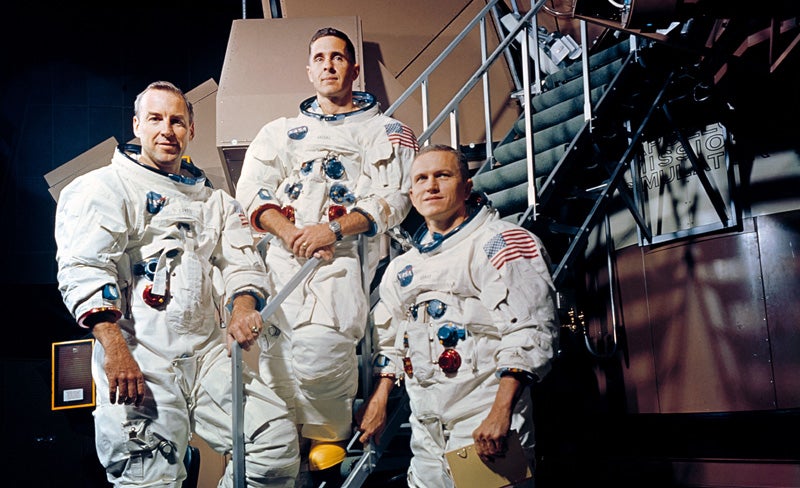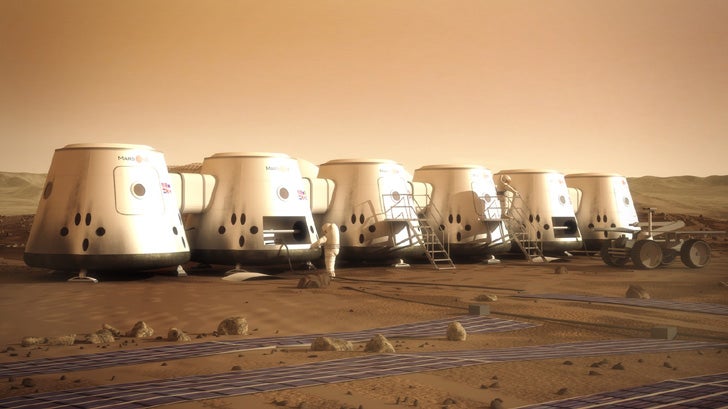Time grows short to tackle the fall 2013 to-do list
ListenWinter solstice arrives Saturday afternoon at 12:11. Saturday also marks a manned mission milestone, on 12/21/68 – Apollo 8 left Earth to become the first manned spacecraft to orbit the moon. Initial studies by the NASA Rover Curiosity on Mars indicate that during a 500-day mission to the red planet, the increased exposure would increase an astronauts’ lifetime risk of fatal cancer development to 5%. The current limit for lifetime of radiation exposure increase for astronauts in low-earth orbit is 3%. Mars has no magnetic field or atmosphere like earth to provide similar protection.
December 16, 2013
[Dave Heller] Time’s winding down to tackle that fall to-do list. Let’s prioritize with Derrick Pitts, chief astronomer at the Franklin Institute. Derrick, we’ve sampled snow and sleet and temperatures in the teens, and now the calendar is finally catching up.
[Derrick Pitts] Saturday at 12:11 p.m. begins the real winter. We reach winter solstice at that point in the Earth’s orbit where we are ostenstibly our closest point to the sun.
So that’s different than 12:10 p.m. and 12:12 p.m.?
It is different. Culturally we’ve thought of the beginning of winter as us entering a period. And that’s how we should think of it. I mean we’re talking about how humans relate to the climate and the environment. However, when we think of it astronomically speaking, it’s a particular point in the Earth’s orbit. We can take it right down to the second if you wish, but that would be splitting hairs a bit too fine. But it’s at that point that I like to think we’re beginning our climb back out of the depths of winter and heading back up towards the glorious times of summer.
Though as we’ve often noted there is that disparity between earliest sunset and latest sunrise.
And we’re right in the middle of that because we had our earliest sunset on December 7. Our latest sunrise still doesn’t come until early January, so we’re a ways off from getting everything together. However, if we were to equalize everything across the board — the Earth’s orbital speed, the distance from the sun, all of those kinds of things — we’d find that indeed all three dates — the earliest sunset, the latest sunrise and the fewest number of hours of daylight — they all come on the same day.
Let’s note that Saturday also marks a manned-mission milestone.
Yes, it actually does. December 21, 1968 was the day that Apollo 8 was launched to the moon. Apollo 8 was the second of the Apollo series of launches. It was the first manned-launch to the moon and it marks the first time man ever travelled this great a distance from Earth out to the moon and back. They spent about 147 hours in space, astronauts Borman, Lovell and Anders. And during this trip out to the moon they circumnavigated, or orbited, the moon 10 times. And it was during this mission that they actually spent Christmas in space, gave a live broadcast back to Earth on Christmas Eve, and recited some scriptures appropriate for the season as they made their way around the moon.
Another first: Those 10 circumnavigations meant that there were 10 periods that craft was out of contact with NASA.
Yes, indeed that was. That was the first instance in which that ever happened, when a spacecraft was out of radio contact. And I’m sure it was quite an experience as we’ve heard from some of the Apollo astronauts who stayed on board the orbiter while the other two astronauts went down to the moon. It was indeed an incredible period of time to spend as the person, or in this case, the people most separated from the rest of humanity and the Earth ever in history.
-

These three astronauts are the prime crew of the Apollo 8 lunar orbit mission. Left to right, are James A. Lovell Jr., command module pilot; William A. Anders, lunar module pilot; and Frank Borman, commander. They are standing beside the Apollo Mission Simulator at the Kennedy Space Center (KSC). Photo credit: NASA, November 13, 1968
147 hours… That’s nothin’ compared to the eventual 500-day trek to and from Mars, and the risk includes cumulative radiation exposure.
There are enormous differences in cumulative radiation exposure for a trip to Mars as opposed to doing anything in low Earth orbit or near Earth orbit, like the moon. So NASA has a lifetime limit of elevated cancer-risk for astronauts of just 3%. So they can only accumulate up to 3% more additional lifetime risk working in low Earth orbit than they would be able to on Earth. Now for Mars, we’ve been able to determine through analysis of data collected by the Mars science lander on its way out to Mars, after which we named it Curiosity, and its time on Mars over those 300 days the data indicates at this point that that risk increase goes up to about 5% over a 500-day mission.
Are efforts still underway though to even better protect the craft or suits that astronauts wear, perhaps even to reduce that risk more?
There’s a whole suite of things that are in play for this. Number one is better data collection, more data collection, better analysis of that, as well as thinking of ways to mitigate that radiation exposure, either through suits that astronauts wear, the ways in which astronauts are protected, the ways in which they’re protected on the Martian surface. All of those are being looked at in ways to try and minimize the radiation exposure over time.
But for now those far-out notions of colonizing Mars or even the moon are just that.
Well actually, no. Because other countries don’t really have a deep-space limit on that lifetime enhanced risk for radiation exposure. NASA’s limit on lifetime radiation exposure risk is for low Earth orbit only. They don’t have a deep-space protocol set for that yet. So it doesn’t mean that they aren’t willing to go beyond that, and other countries certainly do have a protocol in place that will allow for 5% or greater, it just means that we haven’t created a policy yet within NASA for what that radiation exposure would be. More data is needed to set those protocols.
And toward that end there is a non-NASA project set to launch four years from now out to Mars.
Yes indeed. Mars One Foundation has contracted Lockheed Martin to create a lander that would travel out to Mars in 2018 as a precursor to manned-missions in the mid 2020’s. The lander’s first priority would not only be to land safely on the surface of Mars, but to actually perform experiments trying to draw water out of the Martian soil. As part of the precursor exploration experimentation that would prepare the surface for humans to arrive a bit later.
-

Mars One Foundation – Visualization of human colonization of Mars.
WHYY is your source for fact-based, in-depth journalism and information. As a nonprofit organization, we rely on financial support from readers like you. Please give today.




